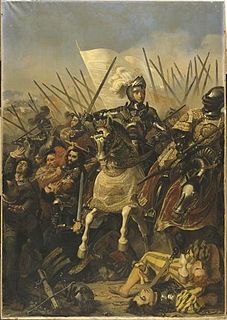 W
WThe Battle of Agnadello, also known as Vailà, was one of the most significant battles of the War of the League of Cambrai and one of the major battles of the Italian Wars.
 W
WThe Battle of Cassano was fought in the Autumn of 1259 between a Guelph and a Ghibelline army in Northern Italy.
 W
WThe Battle of Cassano took place on 16 August 1705, during the War of the Spanish Succession. It was fought at the town of Cassano d'Adda, in Lombardy, Italy, between a French army commanded by the duc de Vendôme and an Imperial army under Prince Eugene of Savoy.
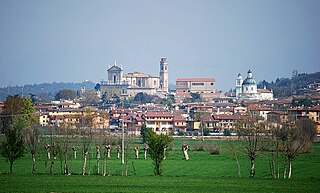 W
WThe Battle of Castiglione took place near Castiglione delle Stiviere in Lombardy, Italy on 8 September 1706 during the War of the Spanish Succession. A French army of 12,000 attacked a Hessian corps of 10,000 that was besieging the town, forcing them to retreat with heavy losses.
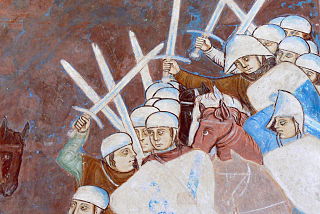 W
WThe Battle of Desio was fought on 21 January 1277 between the Della Torre and Visconti families for the control of Milan and its countryside. The battlefield is located near the modern Desio, a commune outside the city in Lombardy, Northern Italy.
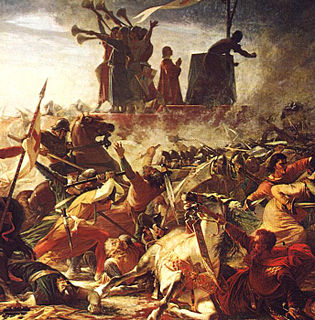 W
WThe Battle of Legnano was a battle between the imperial army of Frederick Barbarossa and the troops of the Lombard League on May 29, 1176, near the town of Legnano in present-day Lombardy, in Italy. Although the presence of the enemy nearby was already known to both sides, they suddenly met without having time to plan any strategy.
 W
WThe Battle of Montebello was fought on 20 May 1859 at Montebello. It was a minor engagement of the Second Italian War of Independence, fought between Piedmontese cavalry and French infantry against Austrian troops. Because of this battle, the Austrian commander-in-chief was obliged to keep some troops to cover the southern part of the front.
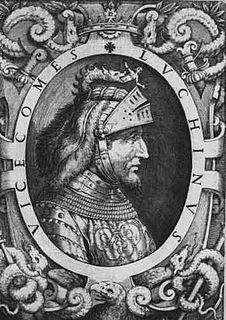 W
WThe Battle of Parabiago was fought in February 1339 near Parabiago, in Lombardy, northern Italy, between the Milanese army and the St. George's Mercenaries of Lodrisio Visconti. A renowned condottiero, the latter was an exiled member of the Visconti family then in power in Milan with a kind of triumvirate formed by Azzone and his uncles, Luchino and Archbishop Giovanni Visconti. Aiming to return victoriously to his city, he hired some 2,500 knights, mainly from Germany, and 1,000 Swiss infantry which had fought in the unsuccessful war of Mastino II della Scala for the hegemony in northern Italy. These units were led by Werner von Urslingen and Konrad von Landau.
 W
WThe Battle of Bicocca or La Bicocca was fought on 27 April 1522, during the Italian War of 1521–26. A combined French and Venetian force under Odet of Foix, Viscount of Lautrec, was decisively defeated by an Imperial–Spanish and Papal army under the overall command of Prospero Colonna. Lautrec then withdrew from Lombardy, leaving the Duchy of Milan in Imperial hands.
 W
WThe Battle of Castiglione saw the French Army of Italy under General Napoleon Bonaparte attack an army of Habsburg Monarchy led by Feldmarschall Dagobert Sigmund von Wurmser on 5 August 1796. The outnumbered Austrians were defeated and driven back along a line of hills to the river crossing at Borghetto, where they retired beyond the Mincio River. The town of Castiglione delle Stiviere is located 10 kilometres (6 mi) south of Lake Garda in northern Italy. This battle was one of four famous victories won by Bonaparte during the War of the First Coalition, part of the Wars of the French Revolution. The others were Bassano, Arcole, and Rivoli.
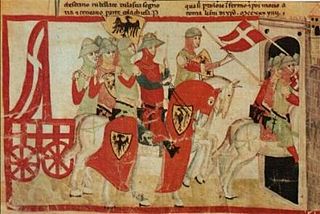 W
WThe Battle of Cortenuova was fought on 27 November 1237 in the course of the Guelphs and Ghibellines Wars: in it, Holy Roman Emperor Frederick II defeated the Second Lombard League.
 W
WFor the battle between Romans and Gauls, see Battle of Cremona. For the battle during the Year of the Four Emperors, see Battle of Bedriacum.
 W
WThe Five Days of Milan was a major event in the Revolutionary Year of 1848 and the start of the First Italian War of Independence. On 18 March, a rebellion arose in the city of Milan, and in five days of street fighting drove Marshal Radetzky and his Austrian soldiers from the city.
 W
WThe Battle of Fombio was fought between the French Army of Italy led by Napoleon Bonaparte and the Austrian army under Feldzeugmeister Johann Peter Beaulieu between 7 and 9 May 1796. It was the decisive strategic point of the campaign, as Bonaparte crossed the Po River at Piacenza in Beaulieu's rear, threatening both Milan and the Austrian line of communications. This threat forced the Austrian army to withdraw to the east.
 W
WThe Battle of Lodi was fought on 10 May 1796 between French forces under Napoleon Bonaparte and an Austrian rear guard led by Karl Philipp Sebottendorf at Lodi, Lombardy. The rear guard was defeated, but the main body of Johann Peter Beaulieu's Austrian Army had time to retreat.
 W
WThe Battle of Lonato was fought on 3 and 4 August 1796 between the French Army of Italy under General Napoleon Bonaparte and a corps-sized Austrian column led by Lieutenant General Peter Quasdanovich. A week of hard-fought actions that began on 29 July and ended on 4 August resulted in the retreat of Quasdanovich's badly mauled force. The elimination of Quasdanovich's threat allowed Bonaparte to concentrate against and defeat the main Austrian army at the Battle of Castiglione on 5 August. Lonato del Garda is located near the SP 668 highway and the Brescia-Padua section of Autostrada A4 to the southwest of Lake Garda.
 W
WDuring the Siege of Mantua, which lasted from 4 July 1796 to 2 February 1797 with a short break, French forces under the overall command of Napoleon Bonaparte besieged and blockaded a large Austrian garrison at Mantua for many months until it surrendered. This eventual surrender, together with the heavy losses incurred during four unsuccessful relief attempts, led indirectly to the Austrians suing for peace in 1797. The siege occurred during the War of the First Coalition, which is part of the French Revolutionary Wars. Mantua, a city in the Lombardy region of Italy, lies on the Mincio River.
 W
WThe Battle of Mediolanum took place in 259, between the Alemanni and the Roman legions under the command of Emperor Gallienus.
 W
WIn the War of the Sixth Coalition, the Battle of the Mincio River was fought on 8 February 1814 and resulted in an inconclusive engagement between the French under Eugène de Beauharnais and the Austrians under Field Marshal Heinrich von Bellegarde. Fought on the same ground as Napoleon's victory at the Battle of Borghetto in 1796, the battle was not as decisive as Eugène hoped, and in the end it had little significant impact upon the war, whose outcome was to be decided in France rather than Italy.
 W
WThe Battle of Ticinum, or Battle of Pavia, was fought in 271 near Ticinum (Pavia) in Italy, and resulted in the Roman Emperor Aurelian destroying the retreating Juthungi army.
 W
WThe Siege of Pizzighettone was the first major military engagement of the northern Italian campaigns of the War of the Polish Succession. Troops from France and the Kingdom of Sardinia began blockading the Habsburg Milanese fortress at Pizzighettone on 11 November 1733, commencing siege operations on 15 November. On 30 November the commander of the Austrian garrison negotiated a capitulation in which he promised to withdraw toward Mantua on 9 December if no relief arrived. As no reinforcements appeared by that time, the fortress' garrison withdrew with full honors on 9 December.
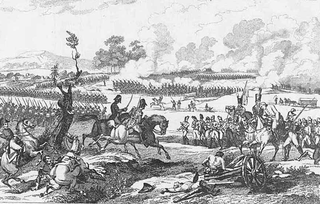 W
WThe Battle of Pozzolo also known as the Battle of the Mincio River and Monzambano was fought during the War of the Second Coalition. A French army under General Guillaume Brune crossed the Mincio River and defeated an Austrian force under General Heinrich von Bellegarde. The Austrians were subsequently pushed back to Treviso where the Armistice of Treviso was signed. This truce would lead to the Treaty of Lunéville and the withdrawal of Austria from the war.